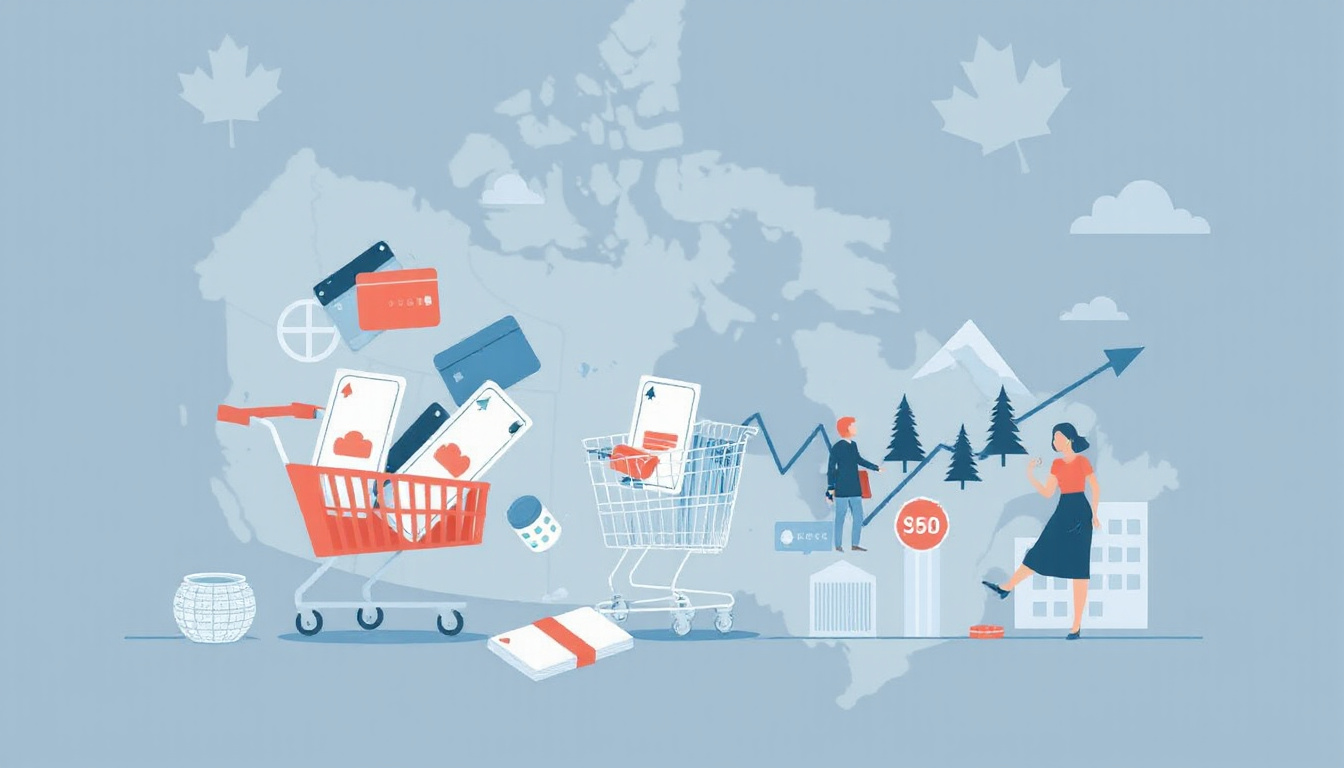In 2023, total consumer debt in Canada reached a staggering $2.3 trillion, marking a 5% increase from the previous year, according to Statistics Canada. This level of consumer debt reflects a significant trend among Canadian households, with approximately 75% of Canadians holding some form of debt. Understanding the nuances of total consumer debt in Canada is essential not only for consumers but also for policymakers and financial institutions as it impacts economic growth and individual financial health.
This article will explore the current trends in consumer debt levels, examine how various economic factors influence these debt patterns, and offer strategies for Canadians to manage and reduce their debt effectively, providing a valuable resource for journalists and bloggers seeking insight into Canada’s evolving debt landscape.

Key Takeaways
- Total consumer debt in Canada has reached unprecedented levels in recent years.
- Current trends indicate a significant rise in credit card and personal loan debt among Canadians.
- Economic factors, such as interest rates and unemployment, heavily influence consumer debt patterns.
- Understanding the implications of rising debt can help consumers make informed financial decisions.
- Effective strategies for managing consumer debt include budgeting, debt consolidation, and seeking professional advice.
Understanding Total Consumer Debt in Canada
As of 2023, the total consumer debt in Canada amounts to approximately CAD
2.3 trillion. This staggering figure highlights the increasing financial burden on Canadians as average household debt reaches around CAD 73,000, including mortgages and non-mortgage debts, according to data from Statistics Canada. The upward trend in consumer debt is concerning; recent studies indicate that nearly 60% of Canadians express anxiety about their debt, underscoring the necessity for effective debt relief strategies. The Bank of Canada has also noted that high levels of consumer debt can have significant implications for the economic health of the nation, affecting everything from spending habits to overall financial stability. These statistics serve as a crucial reminder of the urgent need for individuals and families to manage debt more effectively amid increasing economic pressures.
Current Trends in Consumer Debt Levels
As of 2023, the total consumer debt in Canada has reached an alarming $2.3 trillion, highlighting the growing financial burden on households across the nation. This figure, reported by Canadians in Debt and corroborated by data from the Bank of Canada, reflects a notable increase from previous years, with many households grappling with rising interest rates and inflation. In fact, roughly 60% of Canadians reported being in some form of debt, demonstrating the widespread nature of this issue. Understanding the drivers behind this debt accumulation is pivotal; it encompasses credit cards, personal loans, and lines of credit, each contributing to the financial pressures felt by families today. If trends continue, experts anticipate that by the end of 2024, the total consumer debt could rise to approximately $2.5 trillion, further compounding the economic challenges ahead.
‘The borrower is servant to the lender.’ – Proverbs 22:7

Impact of Economic Factors on Debt Patterns
As of 2023, the total consumer debt in Canada surpassed a staggering $2.3 trillion, according to Statistics Canada. This figure underscores the significant financial burden faced by Canadian households amidst rising interest rates and fluctuating economic conditions. The growing debt levels can be attributed to various economic factors, including inflation and increased housing costs, which have pressured many Canadians to rely more heavily on credit. Recent studies have shown that nearly 60% of Canadians feel anxious about their debt load, highlighting a concerning trend in personal financial wellness. Understanding the dynamics of total consumer debt in Canada is crucial, especially as policymakers and financial institutions grapple with strategies to alleviate these burdens. Further analysis can reveal the age demographics most affected by debt, with millennials and Gen Z showing markedly higher indebtedness compared to older generations.
Strategies for Managing and Reducing Consumer Debt
As of 2023, the total consumer debt in Canada has reached approximately $2.3 trillion, according to data from Equifax. This staggering figure underscores the importance of implementing effective strategies for managing and reducing consumer debt. With nearly 60% of Canadians carrying some form of debt, it’s crucial for individuals to take proactive steps to regain financial control. Common strategies include creating a detailed budget to track expenses, prioritizing high-interest debt payments, consolidating debts through lower-interest loans, and seeking assistance from credit counseling services. Additionally, experts recommend maintaining an emergency fund to avoid accruing additional debt in unforeseen circumstances. For further information on how to effectively manage debt, Canadian consumers can refer to numerous resources including the Government of Canada’s financial literacy framework.
